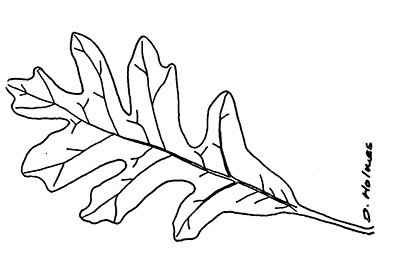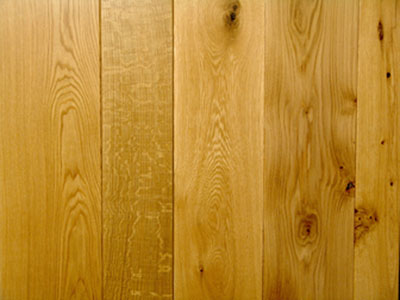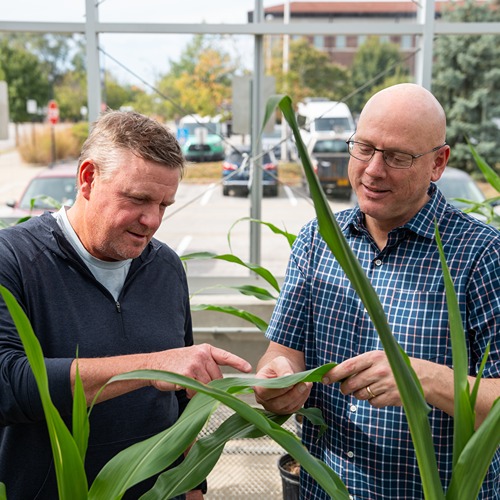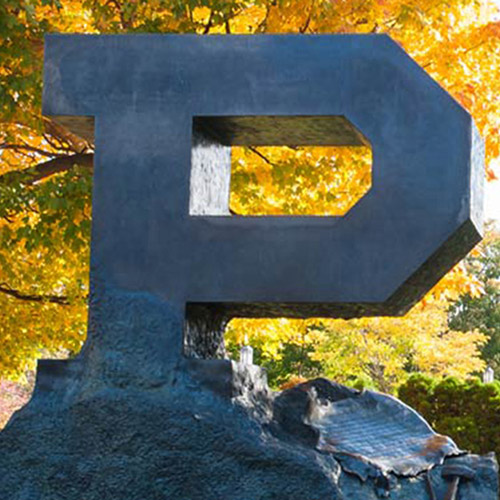Intro to Trees of Indiana: White Oak
The classic and trusted book "Fifty Common Trees of Indiana" by T.E. Shaw was published in 1956 as a user-friendly guide to local species. Nearly 70 years later, the publication has been updated through a joint effort by the Purdue Department of Forestry and Natural Resources, Indiana 4-H, and the Indiana Department of Natural Resources, and reintroduced as "An Introduction to Trees of Indiana."
A printed copy of the full publication is available for purchase for $7 in the Purdue Extension Education Store. The field guide helps identify common Indiana woodlot trees.
Each week, the Intro to Trees of Indiana web series will offer a sneak peek at one species from the book, paired with an ID That Tree video from Purdue Extension forester Lenny Farlee to help visualize each species as it stands in the woods. Threats to species health as well as also insight into the wood provided by the species, will be provided through additional resources as well as the Hardwoods of the Central Midwest exhibit of the Purdue Arboretum, if available. 
This week, we begin a nine-week look at the varieties of oak in Indiana, starting with the white oak or Quercus alba, one of the most common upland hardwood species in the state.
The white oak has rounded-lobes on the end of the leaves. The alternately held leaves can be variable in terms of the number of lobes and the deepness of sinuses between lobes.
The bark on white oak is a lighter ashy gray with patterning which can vary from strong ridging to plating or both all on the same tree.
The fruit of the white oak is an acorn that is chestnut brown in color with a slightly lighter brown cap with knobby scales. Acorns typically mature in one growing season, ripening in the fall.
 White oaks, which grow to 50-80 feet tall, can be found on upland drier sites but also may occur on lower sites with high soil quality and moisture. The natural range of white oak begins in the state bordering the west side of the Mississippi River (Iowa, Missouri, Arkansas, Louisiana) and spreads eastward to the coast as well north into southern Canada.
White oaks, which grow to 50-80 feet tall, can be found on upland drier sites but also may occur on lower sites with high soil quality and moisture. The natural range of white oak begins in the state bordering the west side of the Mississippi River (Iowa, Missouri, Arkansas, Louisiana) and spreads eastward to the coast as well north into southern Canada.
White oak is one of the heaviest lumber species next to hickory, weighing in at 47 pounds per cubic foot. It is very resistant to decay and is one of the best woods for steam bending.
White oak has been used for a variety of purposes including log cabins, ships, wagon wheels and furniture. In fact, white oak is used on the U.S.S. Constitution, the only remaining wooden frigate in the United States Navy that remains afloat, and the white oak used for its many renovations/restorations comes from the CRANE Naval Base in southern Indiana.
 White oak also is preferred for indoor decorative applications ranging from furniture, especially in churches, cabinets, millwork and hardwood flooring. It also may used for caskets as well as whiskey barrels and wine casks. Veneer quality logs and lumber are commonly exported to Europe as a substitute for European white oak.
White oak also is preferred for indoor decorative applications ranging from furniture, especially in churches, cabinets, millwork and hardwood flooring. It also may used for caskets as well as whiskey barrels and wine casks. Veneer quality logs and lumber are commonly exported to Europe as a substitute for European white oak.
Its density and durability make white oak a favorite for industrial applications such as railroad ties, mine timbers, sill plates, fence posts and boards, pallets, and blocking, as well as industrial, agricultural and truck flooring.
The Morton Arboretum warns to prune oaks in the dormant season to avoid attracting beetles that may carry oak wilt. Two-lined chestnut borer, plant galls and scale insects also are potential problems.Other Resources:
ID That Tree: White Oak Group
ID That Tree: White Oak
Hardwoods of the Central Midwest: White Oak
Hardwood Lumber and Veneer Series: White Oak
Morton Arboretum: White Oak
FNR Alumni Keep History Afloat – Story of the U.S.S. Constitution and White Oak on the CRANE Naval Base in southern Indiana
Purdue Plant Doctor
Native Trees of the Midwest, The Education Store
Shrubs and Woody Vines of Indiana and the Midwest, The Education Store
Investing in Indiana Woodlands, The Education Store
Forest Improvement Handbook, The Education Store
ID That Tree, Purdue Extension-Forestry & Natural Resources (FNR) YouTube playlist
Woodland Management Moment , Purdue Extension-FNR YouTube playlist





